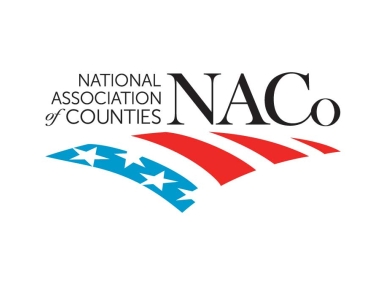Restoration efforts turn former Texas oil field into flood buffer and wildlife sanctuary

Key Takeaways
Harris County, Texas is helping restore a former industrial oil field into protected coastal prairie and wetland, which will mitigate the impact of flooding and create an “urban wilderness” in the nation’s fastest growing county. The land is adjacent to the Armand Bayou Nature Center, which now co-owns it with Harris County Precinct 2 and is conducting the restoration process. The 1,147 acre addition makes the Armand Bayou Nature Center the largest urban wilderness nature preserve in Texas, and one of the largest in the country, sprawling across nearly 4,000 acres.
Learn more
There were once 9 million acres of tallgrass prairie along the coasts of Texas and Louisiana, but less than 1% of that historical prairie remains. Urban development, industrial activity and flooding have significantly degraded the land over time, and restoring it is a unique opportunity that will help the county expand habitat protection, mitigate the impact of flooding and improve the well-being of residents, according to Kristen Lee, Harris County Precinct 2’s senior director of legislative affairs.
The preservation and restoration project is a big win for the county, where opportunities for conservation work are “so few and far between,” Lee said. “There’s not a lot of land out here to save, and there’s not a lot of land at this scale that would make that big of a difference [with flooding mitigation].”
When flooding occurs, the prairie land will act as a “massive sponge” and mitigate its impact on local homeowners and industrial corporations, Lee said. A single acre of Texas coastal tall grass prairie will hold a million gallons of flood water.
“It’s very cost intensive and dangerous to flood when you’re a resident and these homes that are basically between Exploration Green [another nature preserve] and Armand Bayou, now they all stand a chance,” Lee said. “We’re at sea level out here, so when the water comes and it doesn’t have anywhere to go, it really is in our homes and in our cars and in our businesses. So, to have that sort of buffer built in is huge.”
In terms of carbon sequestration, that same acre of prairie that holds a million gallons of flood water sequesters 1.3 tons of carbon each year, according to Tim Pylate, Armand Bayou Nature Center’s executive director.
“You can almost offset your commute with an acre of prairie,” Pylate said.
Many of the wildlife species that used to live on prairies have disappeared — in the past few decades, the bobwhite quail has declined by 80%, the songbird population was cut nearly in half and one million prairie chickens have dwindled down to 80 in total, according to Pylate.
The Armand Bayou Conservation project is providing new habitat for native and returning species, including bald eagles, alligators and river otters, and laid the groundwork for the reintroduction of prairie-obligate bird species, such as bobwhite quail and potentially the endangered Attwater’s prairie chicken.
Exxon Mobil Corporation sold the land to the county and nature center at roughly half of what it’s worth, and retains environmental liability, which is uncommon for oil and gas corporations to do, according to Pylate. The land has a conservation easement, so it will never be developed.
“So, when we want to plant 10,000 plants to restore that prairie, Exxon says, ‘Wait just a second,’” Pylate said. “And they stick some probes down on the ground, and they do some testing, and they say, ‘All clear, you’re good to go, go plant some plants.’ It’s really a neat partnership.”
The Armand Bayou Nature Center utilized RESTORE Act funding (which is dedicated to restoration work across the Gulf Coast) to purchase its shared half of the ownership with the county, which contributed Gulf of Mexico Energy Security Act funding and bond money from its Flood Control District.
The deal finalized last year. Now, the restoration work begins. The first step is to remove invasive species — tallow trees, which are native to eastern Asia, are one of the largest obstacles, Pylate said. Then, planting will begin. Roughly 10,000 plants will be planted on the prairie each year. Once plants start to flourish, it’s time for maintenance, which includes mowing, controlled burning and more planting.
“This is not going to be a short-term investment,” Lee said. There will be ongoing maintenance costs, and the process is expected to take decades, she noted. There are also plans to create trails that connect the community with the green space.
“This is a beautiful example of what can happen when local government, industry and grassroots nonprofits come together for the benefit of their community,” Pylate said.
Related News

County Countdown – Dec. 1, 2025
Every other week, NACo's County Countdown reviews top federal policy advocacy items with an eye towards counties and the intergovernmental partnership.

Counties Celebrate Key Permitting Inclusions in SPEED Act
NACo issued the following statement in response to the passage of the Standardizing Permitting and Expediting Economic Development (SPEED) Act (H.R. 4776), which advanced out of the U.S. House Committee on Natural Resources on November 20.

House Natural Resources Committee advances Standardizing Permitting and Expediting Economic Development (SPEED) Act
On November 20, the U.S. House Committee on Natural Resources advanced the Standardizing Permitting and Expediting Economic Development (SPEED) Act (H.R. 4776), which would make important changes to streamline federal permitting and strengthen county involvement in decision-making by amending the National Environmental Policy Act. Counties support commonsense permitting reforms, and NACo secured provisions in the SPEED Act that would guarantee counties a seat at the table during federal environmental reviews.
Resource
Revitalizing Communities Through Redevelopment: County Brownfields Primer

